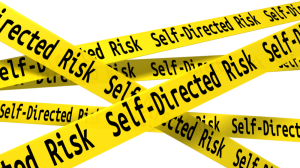Self-Directed IRA Risk
 Returns, of course, are only part of the investment equation. Any prudent investor isn’t going to look at returns, but also Self-Directed IRA risk, as well.
Returns, of course, are only part of the investment equation. Any prudent investor isn’t going to look at returns, but also Self-Directed IRA risk, as well.
The amount of Self-Directed IRA risk really depends upon the investment each individual is making. With self-directed investing, the fact is that you are in control of your own destiny as an investor, when it comes to your retirement account. Which means that the risk you take is entirely up to you. A self-directed retirement portfolio is only as risky as the assets you put in it. You can open a self-directed retirement account and invest in things that are extremely risky – much riskier than nearly any conventional mutual fund, for example – or you can choose to invest entirely in investments that are extremely safe, or that are even considered “risk-free” by the investment community. Or, like most, you can stake out your position somewhere in between.
That said, it’s important to keep in mind that there are many different kinds of Self-Directed IRA risk. An investment may be risky in one sense and not very risky in another. Here are several important kinds of risks you should keep in mind:
Investment risk. Most investors understand this risk quite well, even though they tend to underestimate it. This is the risk that the market value of any given company you are investing in could fall – or even, theoretically, go to zero. Stocks are clearly vulnerable to this risk, but so are bonds, real estate, precious metals, partnerships, oil and gas interests, and almost any other securities or equity interests in anything you can name. However, real estate and precious metals don’t have much risk of falling to zero – one of the benefits of investing in hard assets rather than paper assets. On the other hand, cash and cash equivalents like CDs and money markets are considered to have little or no investment risk. (Note, money markets are not FDIC guaranteed and can theoretically lose money, though it would be a singularly unusual event if it happened.)
Inflation risk. This risk is directly related to the tendency of the dollar, along with all other currencies – to gradually decline in purchasing power. In a way, it’s the inverse of investment risk, because in practice, if you try too hard to avoid investment risk, you wind up taking on inflation risk. This is because investments with little or no investment risk don’t return enough to keep up with inflation. Gold is historically a solid hedge against currency inflation, though, and long-term, stocks do tend to outperform inflation, though there are wild swings in stock prices and periods where years can go by with stocks lagging behind inflation, if you bought stocks at a very high point.
Systemic risk. This is risk that affects the whole system, and cannot be diversified away. If stock prices fall at the same time as bond and real estate prices, there’s not much chance of picking the lonely exceptions to the rule. The best way to hedge against systemic risk is to diversify into many different unrelated asset classes.
Regulatory/Legislative risk. This is the risk that Congress could pass a law that makes a given investment less attractive – and therefore causes it to lose value. For example, if your business relies on a tax credit, such as some filming and green energy initiatives, those tax credits could go away, causing you to lose money. This could happen even if the management team is highly competent and doing everything right. Legislative risk is something beyond their control.
Interest rate risk. This is the risk that your investments and/or income will be affected by unpredictable changes in prevailing interest rates. For example, bond prices.
So any investment you could put in your IRA is exposed to one risk or another. But in many cases, if you invest in assets you know and understand, you can substantially reduce your risks, compared to someone who is less familiar with the same industry. Your risk can also be much lower than it would be if you strayed beyond your circle of expertise.
This is where self-direction can make sense. Some individuals can run a business with much more reliable success than they could achieve if they were trying to buy securities in other peoples’ businesses, or where the CEO and management team was unknown to them.
Some people are simply more comfortable investing in a few baskets that they can control, rather than spreading their eggs among many baskets that they can’t control.
In either case, self-directed investing can work out very well. The bottom line, in however, is that self-directed IRA investing is exactly as risky as you choose to make it. You are in control.
Want to learn more? Visit our library at www.AmericanIRA.com, or call us at 866-7500-IRA (472). We look forward to hearing from you.
Image by: presentermedia.com
